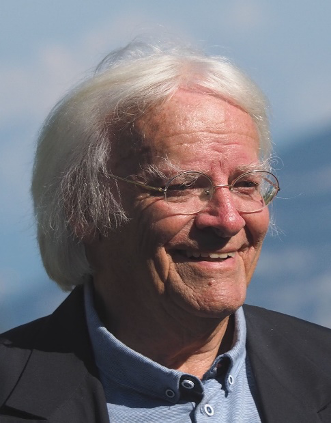
Hans Joachim Specht, one of the founders of ultra-relativistic heavy-ion physics and a pioneering figure in hadron cancer therapy, passed away on 20 May 2024, at the age of 87. A graduate of the University of Munich and ETH Zurich, and full Professor at the University of Heidelberg for more than 30 years, his career was distinguished by important contributions across a spectrum of scientific domains.
Hans started his academic career in atomic and nuclear physics in Munich, under the guidance of Heinz Maier-Leibnitz. A highlight was the discovery and precise measurement of shape isomerism in heavy nuclei. His observation of distinct rotational bands in 240Pu showed, for the first time, that nuclei can be in a strongly deformed cigar-shaped state shortly before fission, confirming the concept of a “double-humped” fission barrier. In Munich, and later in Heidelberg, he developed several innovative large-scale detectors for fission fragments and reaction products of heavy-ion collisions, becoming one of the leading experimentalists in the new field of “heavy-ion physics”, with experiments at the MPI for Nuclear Physics in Heidelberg and at the newly founded GSI in Darmstadt.
In the early 1980s, Hans reoriented his research towards the higher energies available at CERN. His contributions and advocacy, alongside a handful of other enthusiastic proponents, were instrumental in establishing CERN’s ultra-relativistic heavy-ion programme at the SPS accelerator, which was approved in 1984. He became the spokesperson of a first-generation heavy-ion experiment (Helios/NA34-2), initiator and spokesperson of a second-generation experiment (CERES/NA45), and a crucial supporter and mentor for the third-generation ALICE experiment at the Large Hadron Collider.
Initially with the bespoke dilepton experiment CERES, and later as a leading force within NA60, Hans succeeded in detecting, for the first time, thermally produced lepton pairs in heavy-ion collisions. Arguably one of the most challenging signals, the “Planck-like” spectrum of thermal radiation at higher masses, and the precise characterisation of the in-medium modification of the rho-meson at lower masses, proved to be crucial in establishing the existence and properties of the quark–gluon plasma – the state of strongly interacting matter thought to have existed in the primordial Universe, just a few microseconds after the Big Bang. The enduring quality and relevance of these measurements remain unsurpassed almost two decades later.
Hans also provided forward-looking impulses for nuclear and particle physics research as Scientific Director of GSI (1992–1999), where he set the technical and science-policy course for the development and application of a groundbreaking innovation in radiation medicine – ion-beam cancer therapy. A pilot project at GSI for the irradiation of tumours with 12C ions, launched under his leadership, successfully treated 450 patients and led to the establishment of the Heidelberg Ion-Beam Therapy Center (HIT), the first European ion-beam therapy facility. Reflecting on his achievements, he was most proud of his contributions to ion-beam therapy, improving human health through scientific advancement.
Hans also had a profound interest in the intersection of physics, music and neuroscience, collaborating with Hans-Günter Dosch on understanding perception of music and its physiological bases. This transdisciplinary approach produced highly cited publications on the differences in the auditory cortex between musicians and non-musicians, expanding the boundaries of how we understand the brain and its response to music.
Hans was an outstanding teacher, a prolific mentor, a successful science manager, but foremost, he was an inquisitive scientist – someone who profoundly loved physics, with a thirst for knowledge, a hunger for understanding and a relentless drive to follow wherever his interests and research would lead him.
His friends and colleagues
____
A full obituary will appear later in the year in the CERN Courier.
